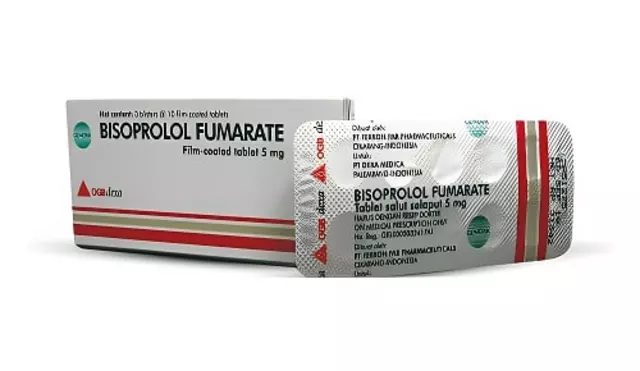Introduction: Amoxicillin for Tonsillitis
As someone who has suffered from tonsillitis in the past, I know how important it is to find a suitable treatment that is both effective and safe. In this article, I will discuss amoxicillin, an antibiotic commonly used for treating tonsillitis. We will explore its dosage, effectiveness, and potential side effects. Join me as we delve into how amoxicillin can help alleviate the symptoms of tonsillitis and speed up the recovery process.
Understanding Tonsillitis: Causes and Symptoms
Tonsillitis is an infection of the tonsils, which are the two small glands located at the back of the throat. The infection is usually caused by bacteria or viruses, with the most common bacterial cause being Streptococcus pyogenes, also known as group A streptococcus. Symptoms of tonsillitis may include a sore throat, difficulty swallowing, swollen tonsils, fever, and swollen lymph nodes in the neck. It is essential to identify the cause of tonsillitis to determine the most appropriate treatment, as viral infections do not respond to antibiotics like amoxicillin.
Amoxicillin: How Does It Work?
Amoxicillin belongs to the penicillin group of antibiotics, which are effective in treating bacterial infections. It works by inhibiting the synthesis of bacterial cell walls, leading to the destruction of bacteria and ultimately resolving the infection. Since tonsillitis caused by group A streptococcus is a bacterial infection, amoxicillin can be an effective treatment option for many cases.
Determining the Right Dosage for Tonsillitis
As with any medication, it is crucial to follow the prescribed dosage to ensure its effectiveness and minimize the risk of side effects. The appropriate dosage of amoxicillin for tonsillitis may vary depending on factors such as the patient's age, weight, and the severity of the infection. Generally, a typical dose for adults and children over 40 kg (88 lbs) is 500 mg to 1,000 mg every 12 hours or 250 mg to 500 mg every 8 hours. For children under 40 kg, the dosage is usually calculated based on their weight, at a rate of 20-45 mg/kg/day, divided into two or three doses.
Duration of Treatment: How Long Should You Take Amoxicillin?
It's important to complete the full course of antibiotics as prescribed by your healthcare provider, even if you start to feel better before finishing the medication. This is to ensure that all the bacteria causing the infection are eliminated and to prevent antibiotic resistance. The usual duration of treatment for tonsillitis with amoxicillin is 10 days, but your healthcare provider may prescribe a different duration based on your specific condition and response to the medication.
Effectiveness: How Well Does Amoxicillin Work for Tonsillitis?
Amoxicillin is generally effective in treating tonsillitis caused by group A streptococcus, with studies showing a success rate of around 85-90%. It is crucial to remember that amoxicillin will only be effective for bacterial tonsillitis, not viral infections. If your tonsillitis is caused by a virus, your healthcare provider may recommend other treatments, such as pain relief and adequate hydration, while your body fights off the infection.
Potential Side Effects of Amoxicillin
As with any medication, there are potential side effects associated with amoxicillin. Some of the most common side effects include nausea, vomiting, diarrhea, and skin rash. These side effects are generally mild and may resolve on their own without any intervention. However, if you experience any severe or persistent side effects, it is essential to contact your healthcare provider immediately. In some cases, an allergic reaction to amoxicillin can occur, which may present as difficulty breathing, swelling of the face or throat, or a severe skin rash. If you experience any signs of an allergic reaction, seek medical attention immediately.
Precautions and Contraindications: When Amoxicillin Is Not Suitable
Amoxicillin may not be suitable for everyone, and it is essential to discuss your medical history with your healthcare provider before starting the medication. Some individuals may be allergic to penicillin or other similar antibiotics, and amoxicillin should be avoided in these cases. Additionally, individuals with a history of liver or kidney problems, mononucleosis, or a history of diarrhea caused by antibiotics should inform their healthcare provider, as they may need a different treatment option or a dose adjustment.
Interactions with Other Medications
Amoxicillin may interact with other medications, which could affect its effectiveness or increase the risk of side effects. It is essential to inform your healthcare provider of all medications, supplements, and herbal products you are currently taking before starting amoxicillin. Some common medications that may interact with amoxicillin include oral contraceptives, anticoagulants, and allopurinol. Your healthcare provider may need to adjust the dosage of these medications or monitor you closely for potential side effects while you are taking amoxicillin.
Conclusion: Amoxicillin as a Treatment for Tonsillitis
In summary, amoxicillin can be an effective treatment option for bacterial tonsillitis caused by group A streptococcus. It is crucial to follow the prescribed dosage and duration of treatment to ensure the best possible outcome and minimize the risk of side effects. As always, it is essential to consult with your healthcare provider to determine the most appropriate treatment for your specific case of tonsillitis and to discuss any potential risks or concerns associated with using amoxicillin.






Cori Azbill
May 29, 2023 at 12:14
Amoxicillin? LOL. You're telling me we still use 1950s antibiotics like it's magic? The CDC says 70% of tonsillitis is viral, and we're just throwing penicillin at everything like it's a video game power-up. Antibiotic resistance isn't a theory-it's your kid's next ear infection. 🤦♀️